1975 Muir-Hill 121 returns home after 30 years!
Posted by Chris Graham on 11th September 2024
Chris Graham chats with Alan Harwood about how he was reunited with a very significant 1975 Muir-Hill 121, after a 30-year separation.

Alan Harwood is delighted to have brought his father’s 1975 Muir-Hill 121 back to the family. Now for the restoration…
I’m sure you’ll all be familiar with the old proverb ‘absence makes the heart grow fonder’, and the way it’s commonly used with regard to human relationships. However, there’s an argument for applying the saying to inanimate objects, too, especially when you factor-in healthy doses of nostalgia and sentimentality.
For most of us, our enthusiasm for old tractors stems from past connections, and is fed by powerful memories of happy times either watching or using a particular machine, or helping relations as they worked. This is very much the case for Alan Harwood and his connection with the Muir-Hill 121 featured here. It’s a very important tractor to him as it links directly to both his father and the happiest of childhoods. Now the machine is back in Alan’s life after a 30-year separation that most definitely made his heart grow fonder.
Chance encounter
I first met Alan on the recent National Vintage Tractor Road Run. It was a chance encounter just before the start and, during our brief conversation, he happened to mention the returning Muir-Hill. Fast-forward a couple of months and we found ourselves surrounded by interesting tractors in his rented East Sussex yard, about to fire-up the Muir-Hill for the photo session.
“My tractor memories go right back to when I was about five or six,” Alan explained, “to a time when my dad was working for a farmer called Bill Holt at Stud Farm, in Telscombe village, East Sussex. It was a large farm up on the South Downs and my brother, Mike, and I began helping there at harvest time. We used to get paid a penny for every bale that we stacked.
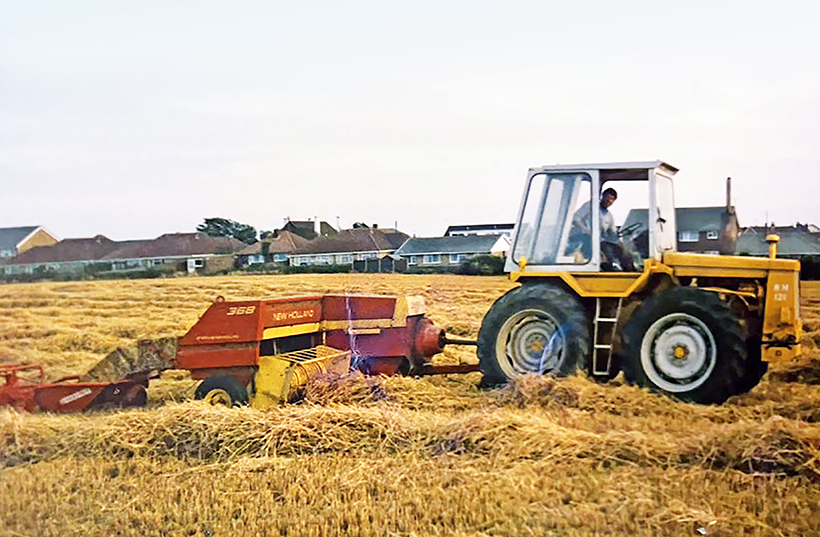
Vic Harwood (aka the Mystery Ploughman – another story!) with the Muir-Hill in 1990. The tractor worked for about nine years on general contracting duties and was often driven by Alan in those days.
“We were a close-knit, large family and I had three brothers and four sisters, so money was always tight in the early days. To help make ends meet, Dad worked on the farm during the day and then took a nightshift on the ferries at Newhaven. We did everything as a family and it was a very happy time for us all.
“But, in search of more money, Dad left Bill’s farm after a few years and started his own agricultural contracting business, trading as VJ Harwood. That was a success from the start and, as the business expanded and Mike and I became more involved, the name was changed to VJ Harwood & Sons.”
Alan told me that his father always had an interest in classic tractors. “I’m sure that’s where my passion comes from, together with time I spent driving his machines as an impressionable youngster. Like him, I felt that agriculture was in my blood so, when I left school, the obvious choice was to work on a farm.”
First steps
Alan went to work on a mixed farm, helping on the arable side of the operation. But then, having got married, started a family and taken on a mortgage, he soon realised that he needed more money, so a change was necessary. “I was really disappointed to leave farming at such an early age,” he told me, “but there was no alternative; I needed a job that would pay more, so that’s what I got.”
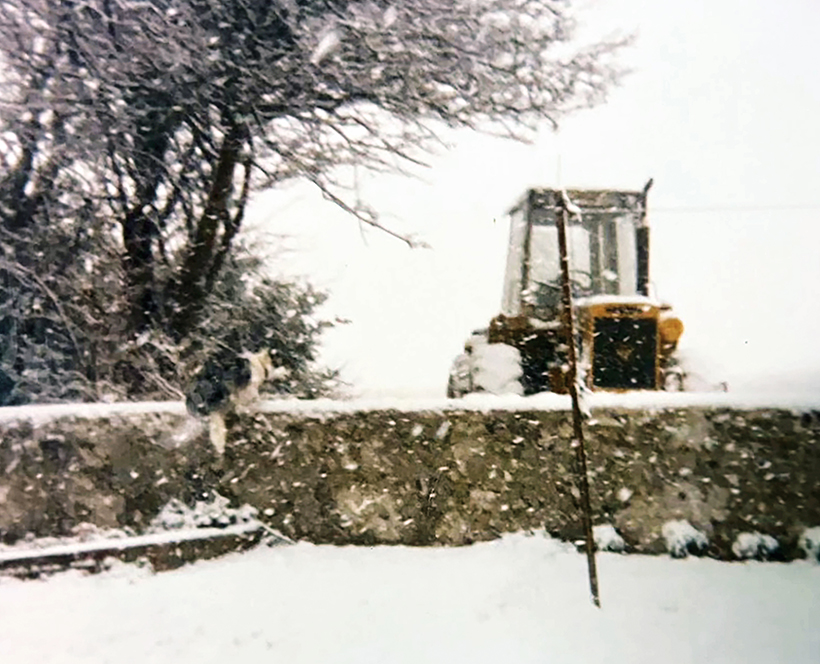
The Muir-Hill proved excellent at everything it did, including important snow-clearance work for the local council.
There followed a good number of years during which Alan’s involvement with agriculture was restricted to occasional topping work, helping his father with the contracting when needed and attending a few shows. But things changed in 2021 when, sadly, his father died and his classic tractor collection was distributed among the brothers.
“Peter was left the 1982 John Deere 1640, which was the tractor he’d worked with his father for 20+ years. Now it’s a working tractor in need of restoration. Paul inherited a David Brown 990 (which he’s since restored beautifully), Mike got the David Brown 1212 that my father had almost finished restoring, and I was left the John Deere 3640, which is awaiting restoration.
“We’re proud to have taken on these machines from Dad, and regard them as a significant part of his legacy. In addition, we’ve established an annual working day that takes place on the Downs every September, in his memory. It’s an invitation-only occasion at which we gather together an assortment of interesting machinery that we know he would have loved, and everyone just has fun cultivating a few stubble fields.”
Alan continued: “However, one of the most memorable machines that Dad ran back in the day was a 1975 Muir-Hill 121 which, I think, was about eight years old when he bought it. It was far from a pristine machine when it arrived, and required a fair bit of work before it was ready to go out and start working for its living. The paintwork had to be tidied up – Dad added a go-faster stripe! – and quite a lot had to be done to the engine. Incidentally, Dad was a big Perkins fan so, as a joke, he fixed a ‘Perkins’ badge on the front of the Muir-Hill, much to the bafflement of many onlookers!”
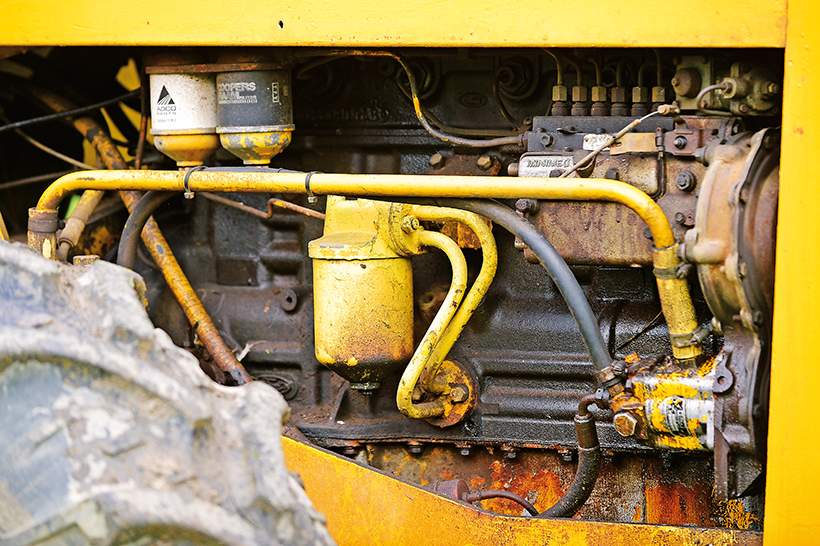
The engine isn’t the tractor’s original unit. This one came from a Dennis dustcart and appears to be in remarkably good condition. It currently runs amazingly smoothly so will be left untouched during the restoration.
The main machine
“Dad ran the 121 as his main contracting machine for about nine years, before selling it sometime during the 1990s,” Alan said. “He used it for all manner of agricultural jobs during the spring and summer and then, in winter, had a contract with the council for snow clearance. Mike and I often helped with those jobs, so got very familiar with the machine.”
However, it wasn’t all plain sailing. “A few years after Dad bought it, we had to change the engine. The original unit was clapped-out and I’m sure that Dad was aware of that when he bought it. We swapped it for a unit taken from a Dennis dustcart found in a scrapyard in Hailsham. It was an identical six-cylinder Ford engine, so was a straight switch.
“The Muir-Hill was split in a friend’s barn to do the work, and I can still remember the struggle we had to get the ‘new’ engine onto the trailer at that scrapyard. It was, of course, a cold and wet winter’s day! But we got the job done in the end and the tractor never looked back from then on. It proved incredibly reliable and an amazing performer that was never defeated by the ground conditions or the task set.
“When the time finally came for it to move on, Dad traded the 121 for a John Deere, ran that for a few years, then switched to a Ford TW before returning to John Deere again, with the 3640 that I now have. He bought that last JD with one eye on its restoration potential but, unfortunately, he simply ran out of time.”
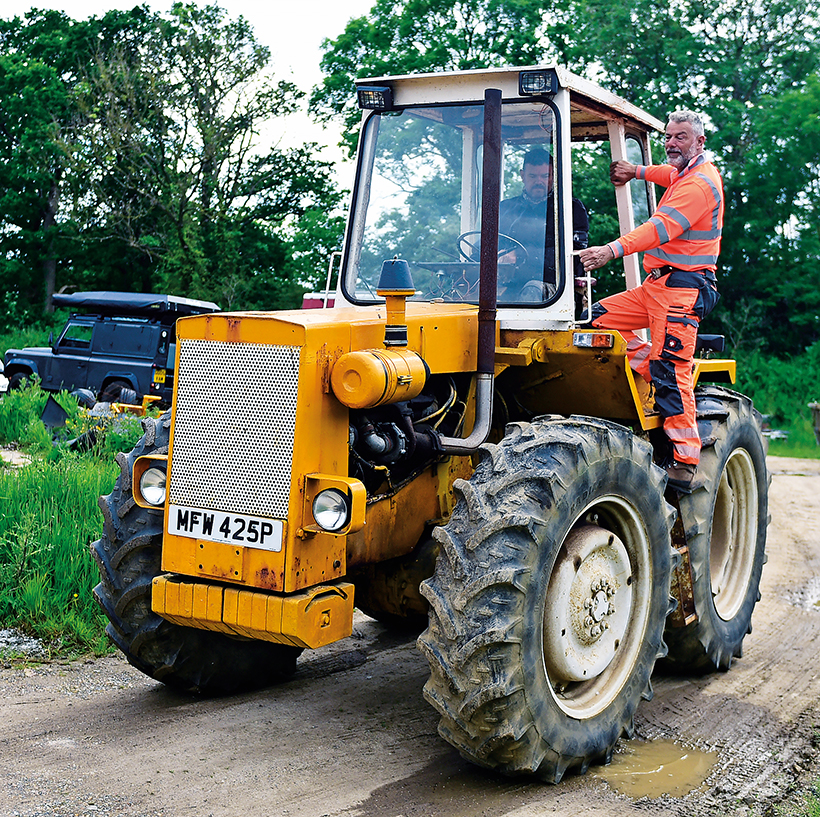
Alan and his brothers Mike (driving here), Peter and Paul all have plenty of affection for the 121. The machine’s in safe hands now.
Hello stranger!
With all that in mind, you can imagine how amazed Alan was to see a random Facebook Marketplace advert pop up on his phone one day last autumn, featuring what looked like the Muir-Hill 121 he used to know so well. “The ad appeared out of the blue based on my previous browsing history,” Alan explained. “I spend a lot of time looking at tractor ads! But, apart from the tractor itself, it was the registration number that really grabbed my attention.
“I couldn’t believe my eyes as, enlarging one of the images, I read what was on the numberplate – ‘MFW 425P’. I’d known that sequence of letters and numbers since I was a boy and, in those days, had even invented a little phrase around it – ‘Massey Ferguson wanted, four pounds 25p’! It was a real double-take moment, and my first reaction was to call my brothers to make sure that I wasn’t going mad. But they confirmed what I was seeing, and we all agreed that it was Dad’s old tractor.”
“The 121 was located north of London, in a village just off the M1, about 100 miles from me in Sussex. I wasted no time in getting in touch with the seller and he sent me a video of the tractor starting and being moved. I could see that it was in a bit of a state, condition-wise, but was happy to buy it ‘unseen’ at the full asking price – £8,500 – just to get the deal done and the tractor secured.”
Alan arranged for a haulage company to transport the 121 back to Sussex and then started doing a bit of digging into its more recent history. He discovered that it had had two owners since being sold by his father, with the one he bought it from only having kept it for two years. Before that it was engaged in forestry work. “I think it must have been worked pretty hard, judging by its condition now. The cab is badly rusted and all the glass and both doors have gone.”
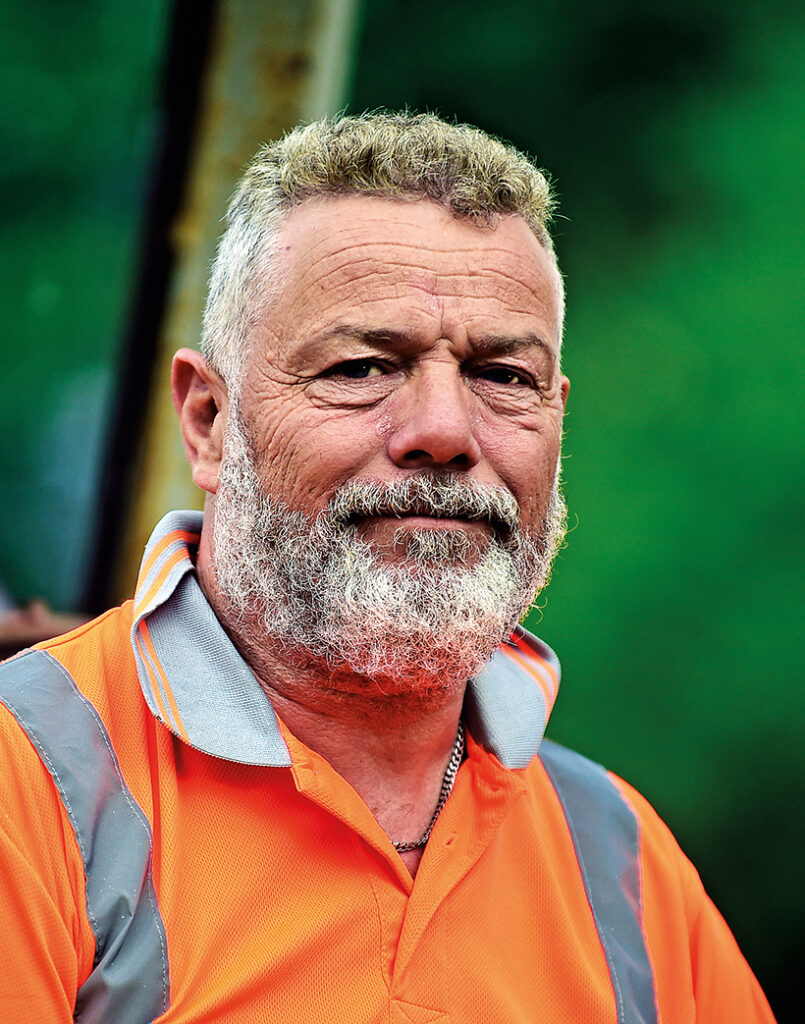
Alan Harwood can’t wait to put the Muir-Hill back to work during his semi-retirement.
Past and present
“I’m absolutely delighted to have the Muir-Hill back in the family, especially as I have so many great memories of it with Dad, and of working it myself. I can still clearly recall using it for all manner of cultivation jobs, carting and, of course, snow-ploughing. It was a brilliantly capable machine; well designed and extremely functional. There was nothing it couldn’t do despite the hilly environment in which we made it work. It just never put a foot wrong, instilled complete confidence and always pulled like a train!”
It’s clear from chatting with Alan just how much it means to him to have brought the Muir-Hill home again, and he’s incredibly enthusiastic about the tractor’s future. “My intention is to crack-on with the restoration without delay, and I’m hoping to have it running and presentable for this year’s working day in Telscombe, at the end of September. I’m pretty handy with all the routine mechanical jobs but, for the more specialised tasks, I have a great support network of talented people around here. There will be no shortage of help, whenever it’s needed.
“It’s a shame that both the doors are missing, and I can’t quite imagine what happened to those. However, I’ve already been in touch with Halifax-based Muir-Hill specialist Lloyd Loaders (MH) Ltd about sourcing some replacements, and it’s good news. The company can either supply complete new doors, ready to fit, or send the designs so that I can get them fabricated at this end. I’ve not decided which way to go with that, yet.
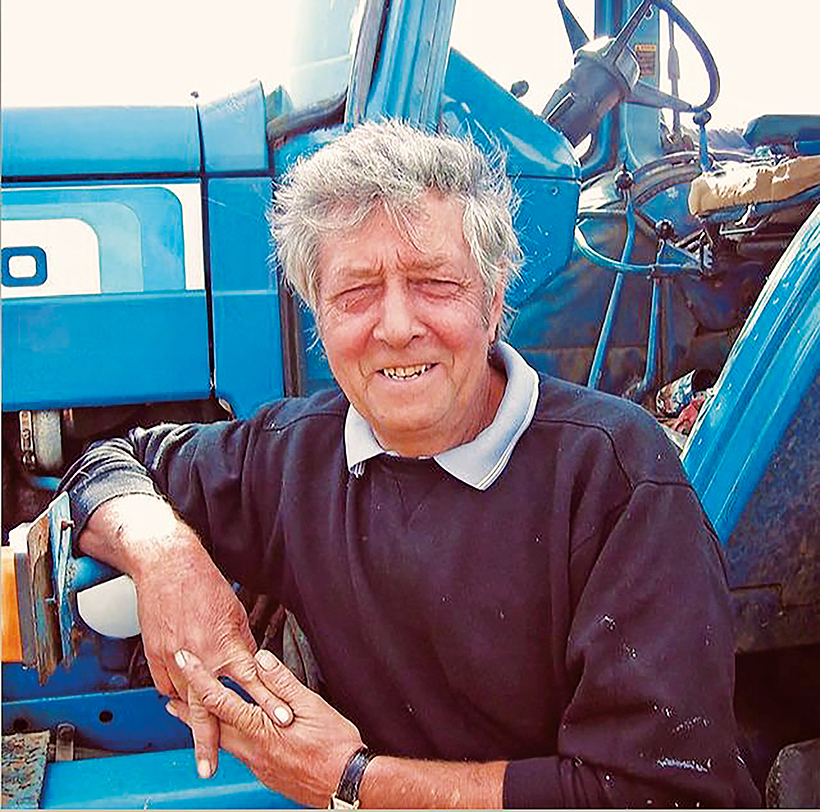
Alan’s father, Vic Harwood, whose tractor legacy lives on under the appreciative supervision of his sons.
“Clearly the cab will need to be removed and stripped so that it can be properly inspected before the repairs start. The tinwork will all come off too, and I’ll steam-clean the engine and skid unit, carry out any renovation work that’s required on the transmission, hydraulics and brakes, then paint everything. I’m not planning to strip the engine because it runs absolutely beautifully, so there’s no point digging into that. As is obvious from the cab, the electrical wiring is in quite a mess so I’m fully expecting to have to fit a new loom.”
Alan’s already making plans to be out and about at shows with the 121 once it’s up and running. “I’m also hoping to take on a bit of agricultural contracting work once I semi-retire, and I’m really looking forward to that,” he added. “It’ll be great to start using it properly again, and to take part in a few tractor road runs. I’m a keen member of Chailey Classic & Vintage Tractor Club, which is very active in terms of organising events. One of the highlights is an exchange visit with a French tractor club based near Calais. A group of its members come to us one year, the we go to them the next, so I’m hoping to take the Muir-Hill across the Channel on that trip as soon as that’s possible.”
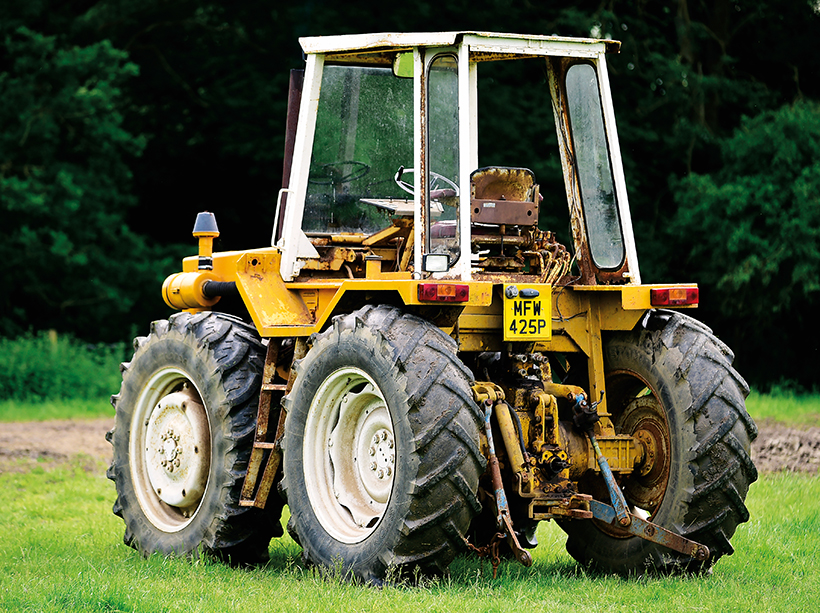
The restoration is likely to have started by the time you read this, and Alan’s plan is to have a presentable, working machine by late autumn.
I have no doubt that Alan will be successful with his restoration of the 121, driven on by not only his nostalgic passion for the tractor, but also because it provides him with a direct and poignant connection with his father. It’s wonderful that he’s managed to bring the machine home and I sincerely hope that the tractor remains settled under the protective care of the Harwood family for many generations to come.
This feature comes from a recent issue of Tractor & Machinery, and you can get a money-saving subscription to this magazine simply by clicking HERE
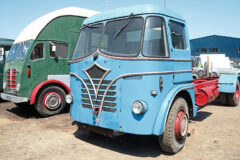
Previous Post
Cheffins’ Summer Vintage Collective sale
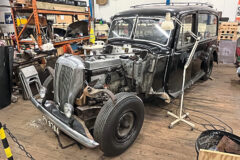
Next Post
We visit the fabulous Ipswich Transport Museum



